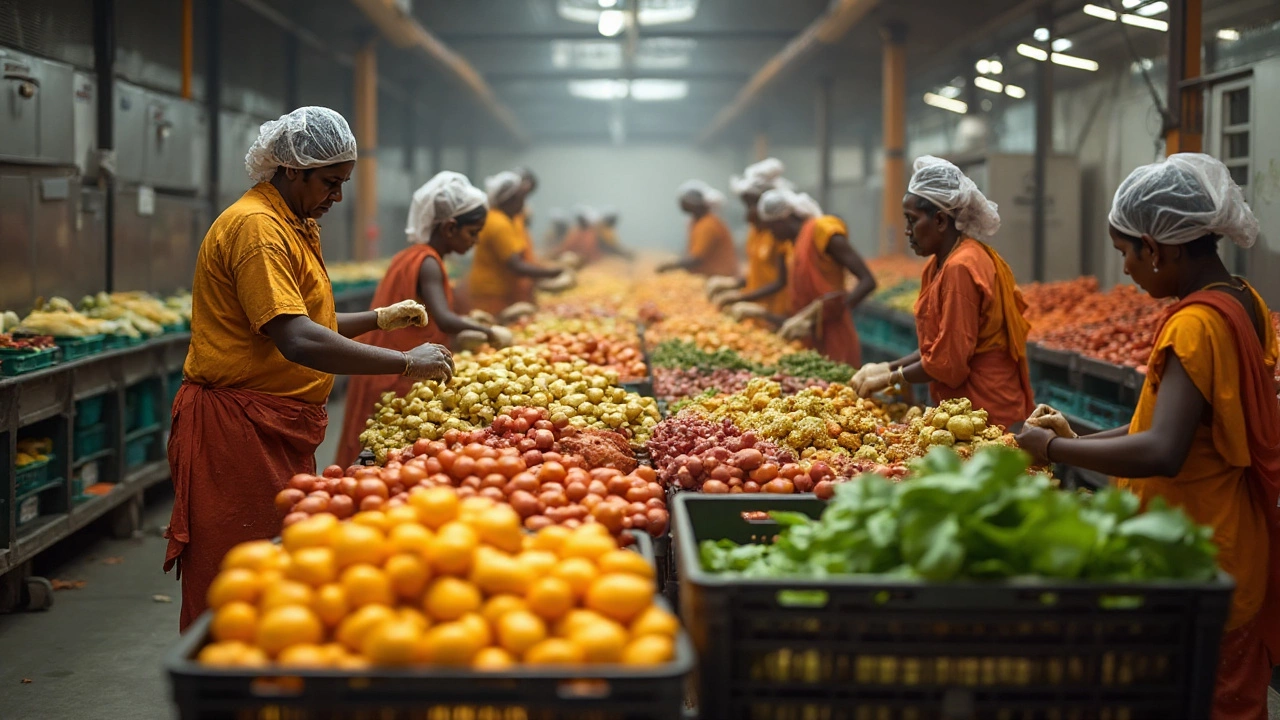- Richest Pharmacist in the World 2025 - Who Holds the Fortune? Oct 10, 2025
- Which Country Is Most Advanced in Electronics Manufacturing? Dec 16, 2025
- Fully Made-in-India Cars: Which Models Are 100% Manufactured Locally? Oct 16, 2025
- Asia's Largest Earth Moving Equipment Manufacturer: The Big Player in India May 7, 2025
- Plastic Exporter Number One: Who Tops the Global List? May 29, 2025
Food Preservation: Simple Ways to Keep Your Meals Fresh Longer
Ever opened your fridge and found that the veggies have gone limp or the leftovers smell off? That feeling of wasted food is frustrating, but you can avoid it with a few basic preservation tricks. By storing food the right way, you lock in flavor, nutrition, and safety while cutting down on grocery bills. Below are the everyday methods that work for most households, plus a look at what recent research says about processed foods and waste.
Top Everyday Preservation Techniques
First up, temperature control. Keep your fridge at 35‑40°F (1‑4°C) and your freezer at 0°F (‑18°C). That small range stops bacterial growth and keeps frozen items solid. For leafy greens, wash, spin dry, and store in a breathable bag with a paper towel to absorb excess moisture. Soups, stews, and sauces last 3‑4 days in airtight containers; if you need them longer, freeze them in single‑serve portions. Canning is a classic method for fruits, pickles, and jams—just follow a trusted recipe and use a pressure canner for low‑acid foods to prevent botulism. Finally, dry‑heat techniques like dehydrating fruit slices or making jerky can stretch shelf life without any fridge space.
What the Latest Research Says
You might think that processed foods are just junk, but a recent article “Most Processed Foods: Surprising Facts and Their Global Impact” shows that many preserved items—canned beans, frozen berries, vacuum‑packed meats—are designed to stay safe for months. The key is the controlled environment they’re stored in. Likewise, the “Truth About Zero Waste Countries” piece highlights that reducing food waste starts with proper storage; countries with better preservation practices see less landfill waste. Using airtight containers, label dates, and rotating stock (first‑in, first‑out) are simple habits that line up with those findings.
Putting these tips into practice doesn’t need a kitchen overhaul. Start with one change—like swapping loose veggies for sealed bags or labeling freezer meals with the date—and watch waste shrink. Over time, you’ll notice fresher meals, fewer trips to the store, and a smaller carbon footprint. If you want deeper dives, explore the related posts on our site: the processed foods article gives a full rundown of what’s really in your pantry, and the zero‑waste guide offers broader sustainability ideas you can apply at home.
Ready to make food preservation part of your daily routine? Check out the full list of articles under the “food preservation” tag for more specific guides, from DIY pickling to bulk‑freezing strategies. Happy storing!
Diverse Fields of Food Processing: Key Sectors and Innovations Explained
- Aarav Sekhar
- Aug 3, 2025
Explore every corner of food processing—preservation, dairy, beverages, frozen foods, meat, snacks, and cutting-edge tech. Get real-world insights and tips that actually matter.
